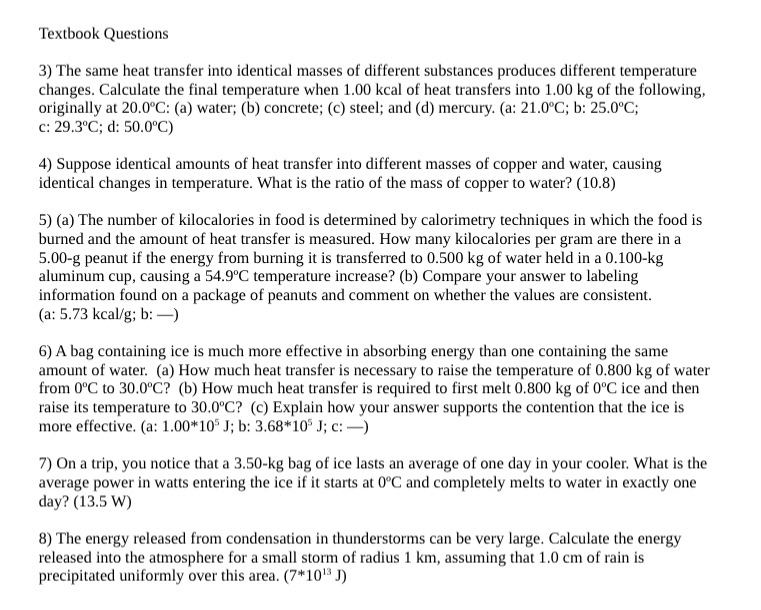Answered step by step
Verified Expert Solution
Question
1 Approved Answer
CH 14Help ASAP with the questions attached (Show Work!) Textbook Questions 3) The same heat transfer into identical masses of different substances produces different temperature
CH 14Help ASAP with the questions attached (Show Work!)

Step by Step Solution
There are 3 Steps involved in it
Step: 1

Get Instant Access to Expert-Tailored Solutions
See step-by-step solutions with expert insights and AI powered tools for academic success
Step: 2

Step: 3

Ace Your Homework with AI
Get the answers you need in no time with our AI-driven, step-by-step assistance
Get Started


